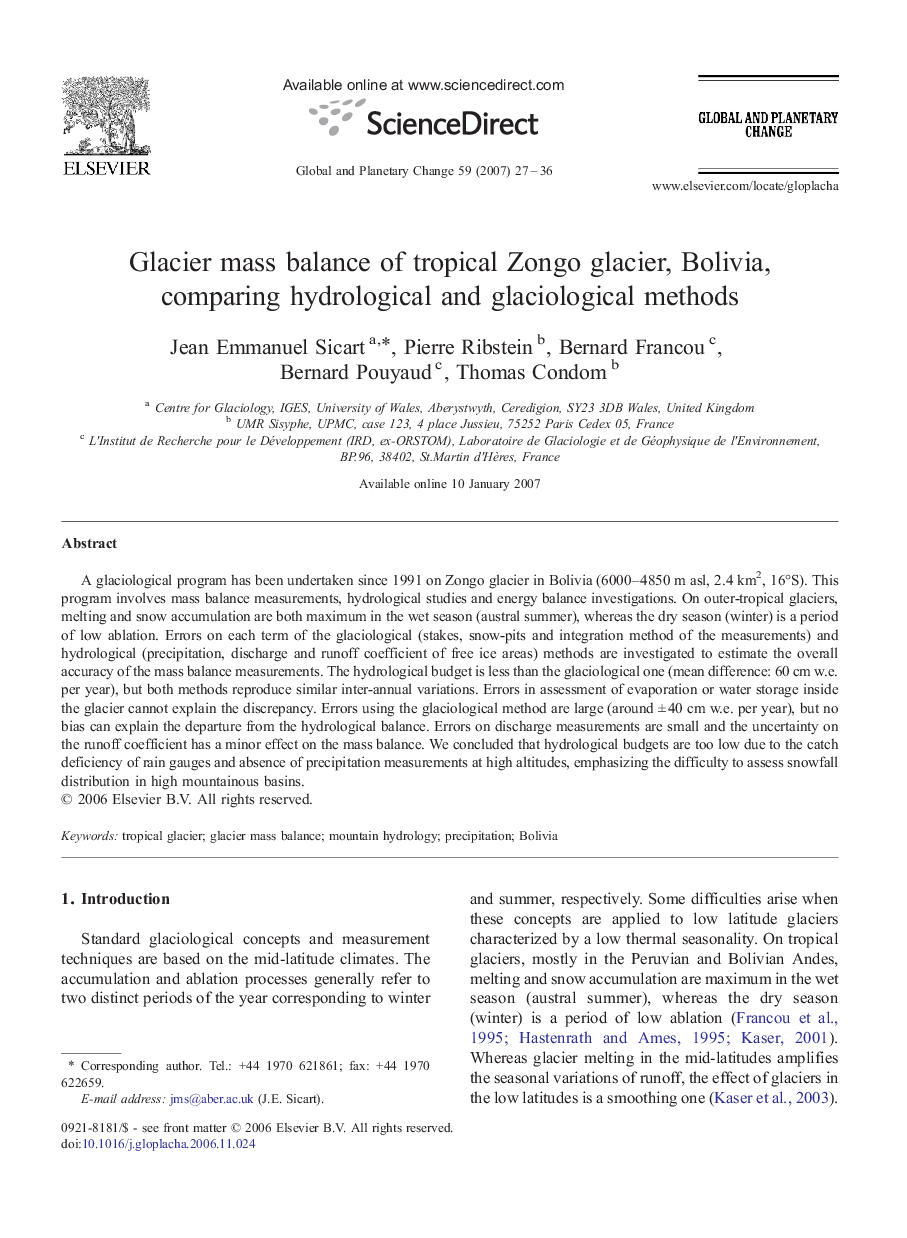| Article ID | Journal | Published Year | Pages | File Type |
|---|---|---|---|---|
| 4464317 | Global and Planetary Change | 2007 | 10 Pages |
A glaciological program has been undertaken since 1991 on Zongo glacier in Bolivia (6000–4850 m asl, 2.4 km2, 16°S). This program involves mass balance measurements, hydrological studies and energy balance investigations. On outer-tropical glaciers, melting and snow accumulation are both maximum in the wet season (austral summer), whereas the dry season (winter) is a period of low ablation. Errors on each term of the glaciological (stakes, snow-pits and integration method of the measurements) and hydrological (precipitation, discharge and runoff coefficient of free ice areas) methods are investigated to estimate the overall accuracy of the mass balance measurements. The hydrological budget is less than the glaciological one (mean difference: 60 cm w.e. per year), but both methods reproduce similar inter-annual variations. Errors in assessment of evaporation or water storage inside the glacier cannot explain the discrepancy. Errors using the glaciological method are large (around ± 40 cm w.e. per year), but no bias can explain the departure from the hydrological balance. Errors on discharge measurements are small and the uncertainty on the runoff coefficient has a minor effect on the mass balance. We concluded that hydrological budgets are too low due to the catch deficiency of rain gauges and absence of precipitation measurements at high altitudes, emphasizing the difficulty to assess snowfall distribution in high mountainous basins.
